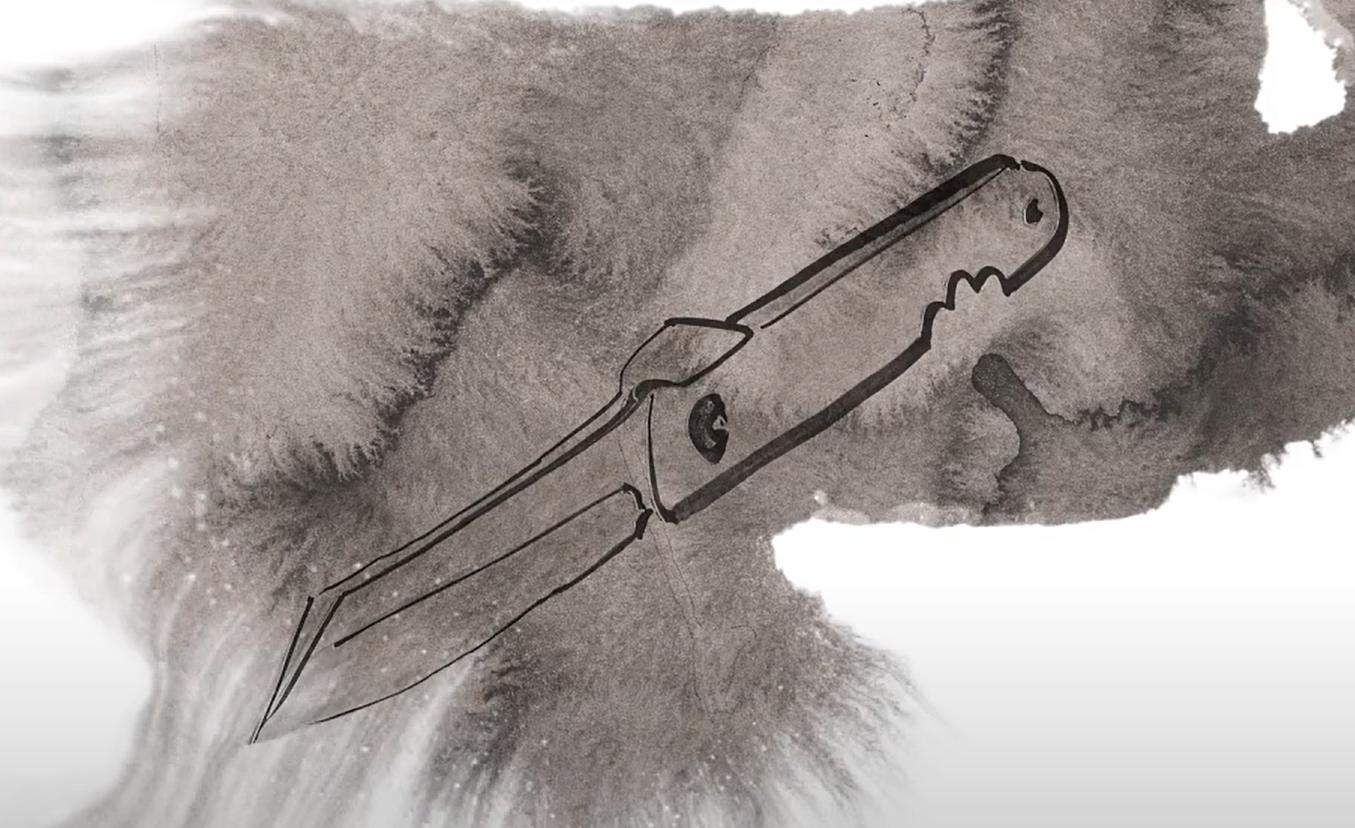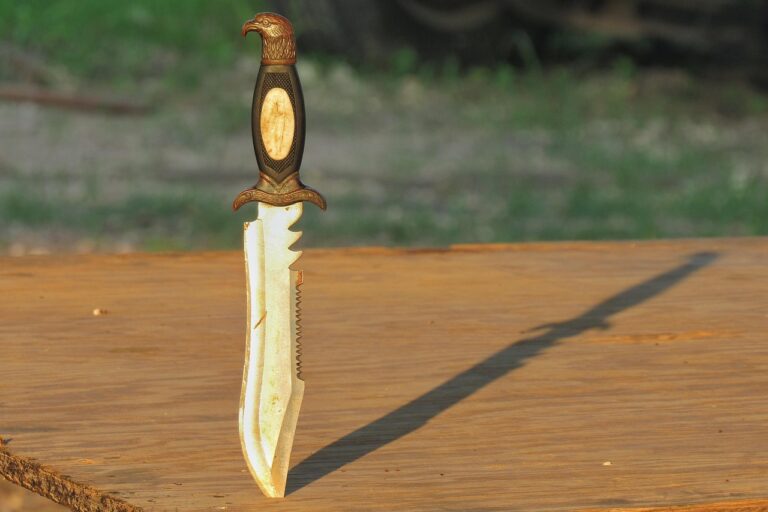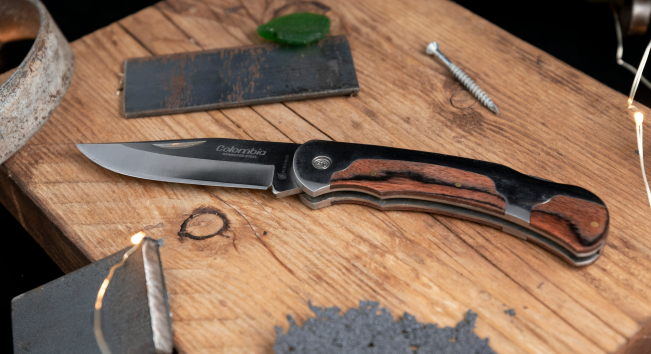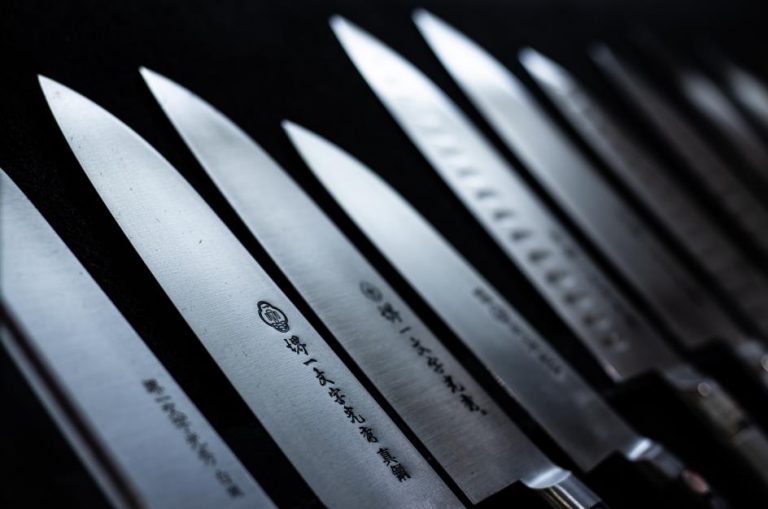Japanese folding knives are admired for their precision, craftsmanship, and cultural heritage.
Rooted in centuries of swordsmithing, Japan’s blade-making tradition evolved into a modern art form that values both function and beauty.
Unlike Western folders, Japanese designs balance simplicity with sharp performance, from the classic Higonokami, first made in 1896, to today’s sleek EDC models.
Collectors appreciate their artistry and innovative steels, while users value the sharpness and reliability that define Japanese cutlery.
Whether you’re a buyer, collector, or brand exploring Japan’s knife market, this guide will help you navigate the most respected Japanese folding knife brands and what makes each of them stand out.
Types of Japanese folding knives
Japanese folding knives come in several forms, from old-school designs to cutting-edge modern creations. Here are the main types and examples of each:
Traditional Japanese pocket knives
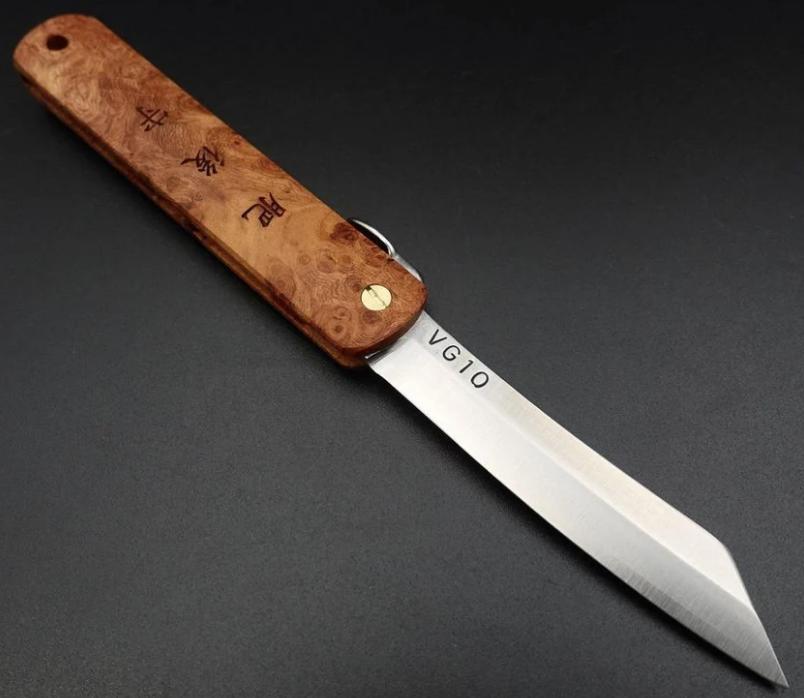
The quintessential example is the Higonokami, a friction folder with no locking mechanism. The blade stays open through friction and thumb pressure on a small lever called the chikiri.
These knives have simple folded metal handles and often use high-carbon steels such as SK or Aogami (blue paper steel) for their razor-sharp edges.
Another maker in this traditional vein is Hiroaki Ohta, who crafts handmade friction folders inspired by the Higonokami pattern but adds modern touches like wooden or micarta handles.
These knives appeal to collectors and minimalists who value a clean, heritage-inspired design.
Modern Japanese EDC knives
Several Japanese brands now produce contemporary folding knives geared toward everyday carry (EDC).
Companies like Mcusta and G. Sakai, both based in Seki City, Japan’s knife-making hub, offer folders with features familiar to Western EDC users: one-handed opening, locking blades, and pocket clips.
Mcusta, for example, uses high-grade stainless steels like VG-10 and SPG2 (R2) powder steels in elegantly designed knives that often feature Damascus blade patterns for visual appeal.
Moki is another respected brand known for its exceptional fit and finish; their knives often feature lockback mechanisms and mirror-polished blades.
Even brands that sound Japanese, such as KATSU, have entered the EDC scene, though their products are usually made in China and only inspired by Japanese design.
Overall, these modern Japanese EDC knives blend everyday functionality with the artistry and precision Japan is known for.
High-end and custom Japanese knives (collector grade)
At the luxury end, Japan produces ultra-premium folding knives coveted by collectors. Rockstead knives are a prime example, often called “factory customs,” they’re made in small batches with near-perfect craftsmanship.
Rockstead blades use exotic steels like ZDP-189 (hardened up to 67 HRC) or YXR7 tool steel, and each is hand-finished to a flawless mirror polish.
Another name in this category is Dew Hara, a custom knifemaker who creates artistic folders in limited quantities. The son of renowned craftsman Koji Hara, he blends modern style with traditional Japanese motifs, often using Damascus or high-end powder steels.
These high-end Japanese folding knives are fully functional yet designed as investment pieces, prized for their artistry, precision, and collectibility rather than everyday use.
Each category offers something unique: the best Higonokami knife for tradition, a Japanese EDC knife for daily carry, or a collector-grade masterpiece for those who admire the highest levels of craftsmanship.
Brand comparison table
| Brand | Made in Japan | Common steel types | Positioning |
| Higonokami | Yes (Nagao Kanekoma factory, Miki) | SK carbon steel, Blue Paper Steel (Aogami) | Traditional icon; simple, affordable classic. |
| Ohta (Hiroaki Ohta) | Yes (Tokyo, handmade) | D2 tool steel; VG-10 San Mai in select models | Artisanal friction folders; collectible pocket knives. |
| Mcusta | Yes (Seki City) | VG-10 stainless; SPG2 (R2) powder steel; layered Damascus | Modern EDC elegance; precision fit and finish. |
| Moki | Yes (Seki City) | VG-10; ATS-34; R2 Damascus on premium models | Immaculate fit and finish; gentleman’s knives, semi-collector grade. |
| KATSU | No (Hong Kong/China based) | AUS-10, D2, ZDP-189 (marketed variants) | Entry-level “Japanese-style” knives; Chinese manufactured. |
| Rockstead | Yes (Osaka) | ZDP-189; YXR7 tool steel (often DLC-coated) | Ultra-premium craftsmanship; mirror-polished blades for collectors. |
| G. Sakai | Yes (Seki City) | VG-10; ATS-34; AUS-8 in select models | Practical and reliable; OEM for Spyderco, SOG, and other brands. |
| Dew Hara | Yes (Custom maker in Japan) | VG-10, ATS-34, Cowry-X, and other premium steels | Custom art knives; unique designs, very limited runs. |
Note: Only the Nagao Kanekoma factory is licensed to use the name Higonokami exclusively. Many other makers produce “Higo-style” knives, but authentic Higonokami knives are made by Nagao in Miki, Japan.
Launch Your Custom Knife Line Faster with LeeKnives
Complete OEM/ODM support—from design to final shipment—so you can focus on growth.
Backed by warehouses in the U.S. for fast, reliable delivery.
Japanese folding knife brands: detailed overview
1. Higonokami – The iconic traditional pocket knife
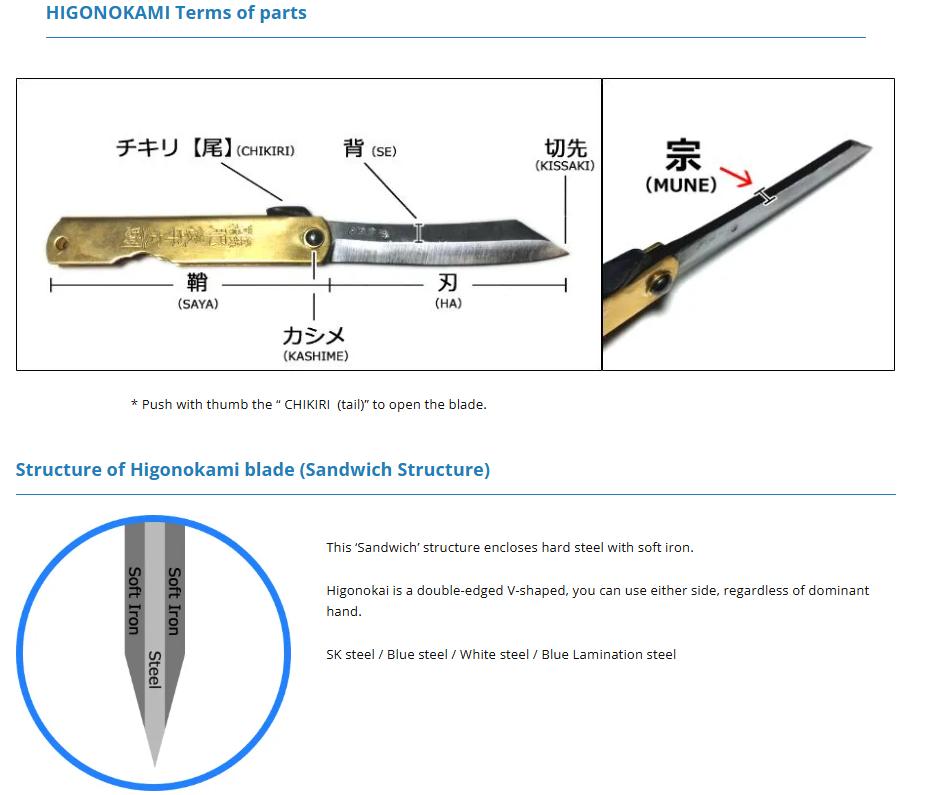
Higonokami is a symbol of Japanese knife heritage. First made in 1896 in Miki City, it marked a shift for swordsmiths transitioning to pocket knives after the samurai era.
Its design is minimalist: a carbon steel blade (usually SK or Hitachi Blue Paper Steel) folded into a brass or steel handle, held open only by friction and the thumb on the chikiri lever.
The simplicity of the Higonokami has endured for more than a century. It’s light, sharp, and easy to maintain, making it a timeless utility knife and collector’s favorite.
Only the Nagao Kanekoma factory in Miki is authorized to produce authentic Higonokami knives today, a genuine piece of Japan’s living craftsmanship.
2. Ohta (Hiroaki Ohta) – Handmade, collector-friendly knives
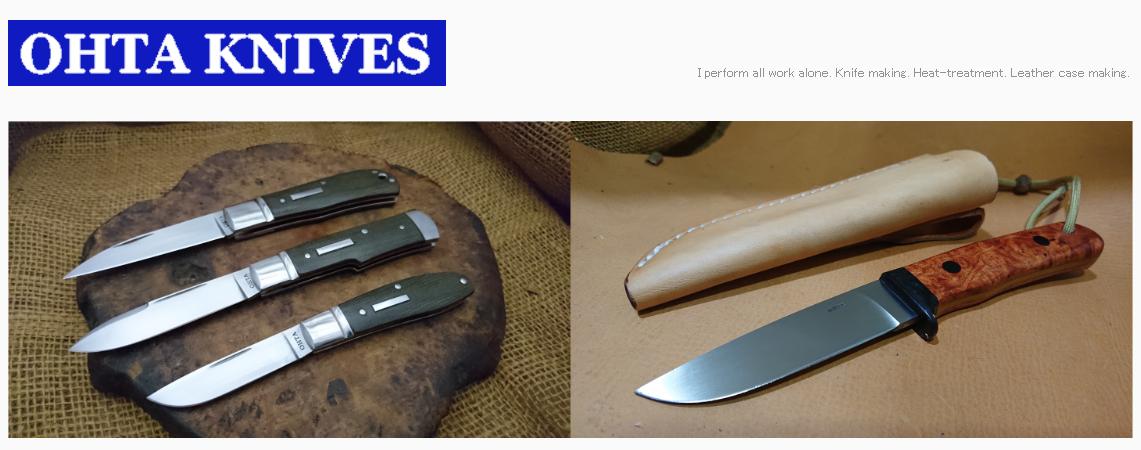
Hiroaki Ohta, a Tokyo-based artisan, handcrafts every knife himself, combining traditional Japanese forms with modern precision.
His friction folders often echo the Higonokami’s simplicity but feature upscale materials like ebony, cocobolo, or desert ironwood.
Ohta typically uses D2 tool steel or VG-10 San Mai Damascus for his blades and includes hand-stitched leather sheaths of his own making.
Each piece feels bespoke, no two knives are identical. Priced around $100–$200, Ohta’s knives bridge old-world craftsmanship and modern performance, appealing to collectors who value artistry and authenticity.
3. Mcusta – Modern Japanese EDC knives with elegance
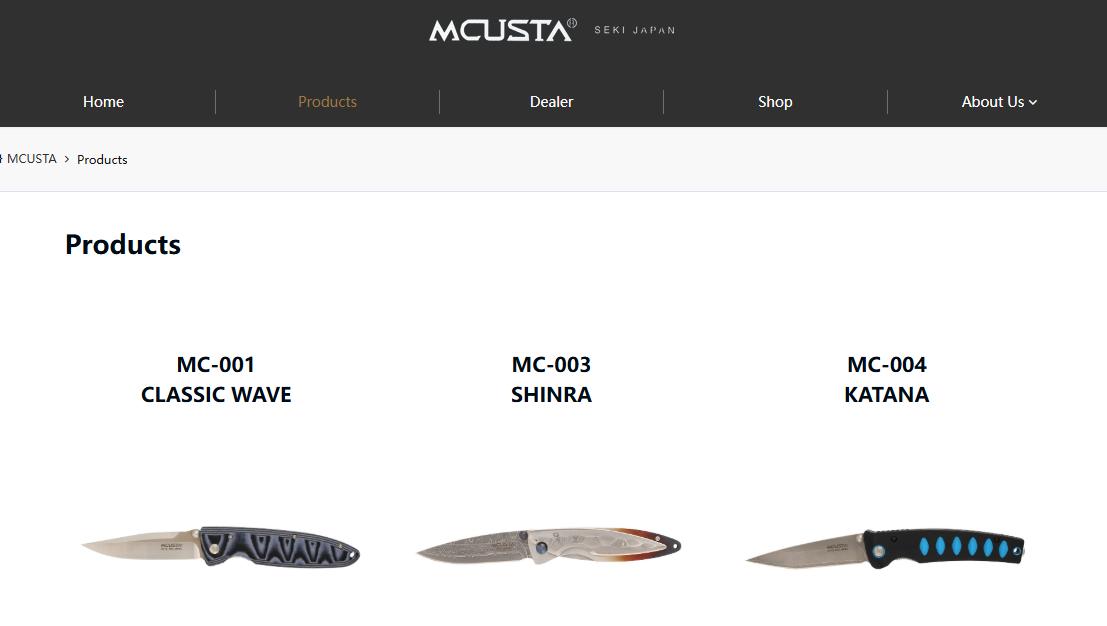
Based in Seki City, Mcusta (short for Machine Custom) merges precision machining with hand-finishing to produce elegant, high-performance folding knives.
Models like the Tactility and Katana feature VG-10 or SPG2 (R2) Damascus blades, paired with wood, aluminum, or steel handles.
Each knife is engineered for smooth action and flawless fit, traits that make Mcusta a standout for both users and collectors.
Proudly made in Japan, Mcusta offers a refined balance of utility and beauty, ideal for anyone seeking a reliable Japanese EDC knife.
4. Moki & KATSU – A note on brand authenticity
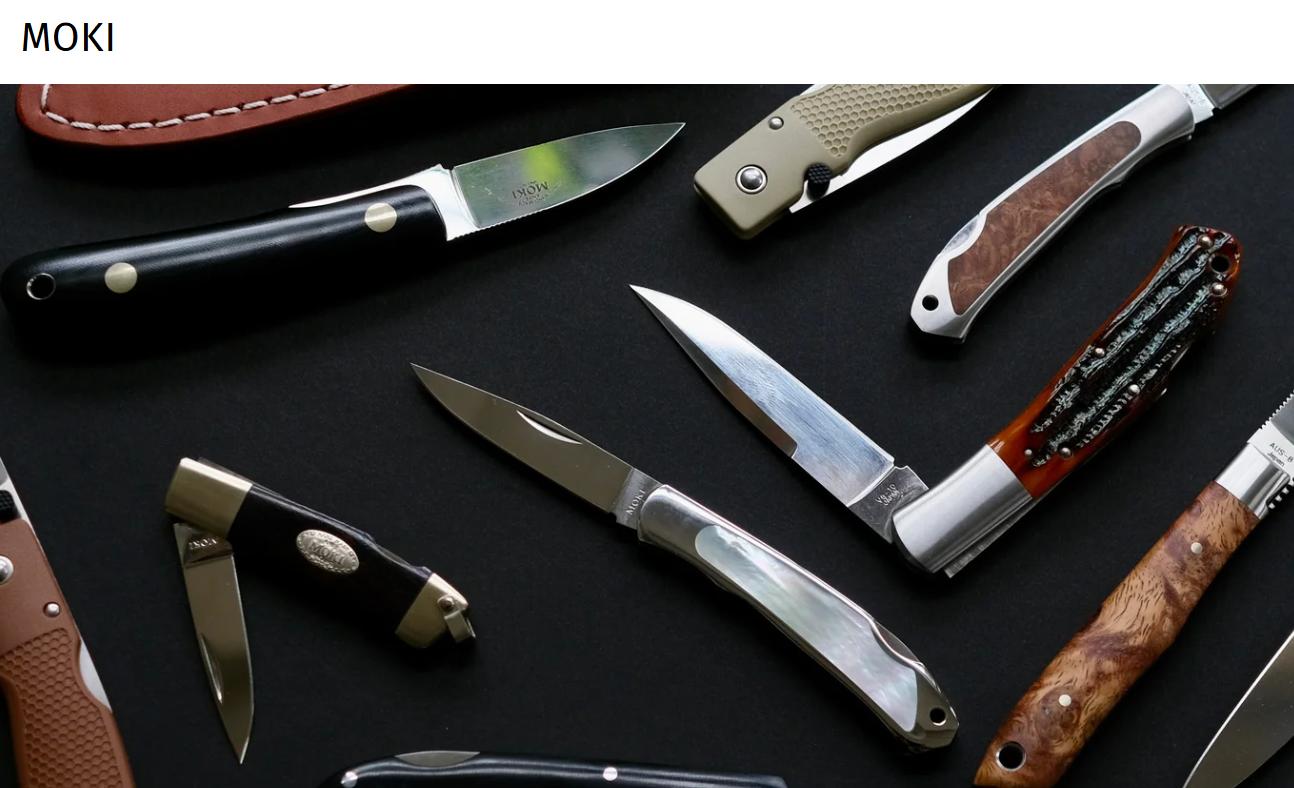
Moki, founded in 1907 in Seki City, remains one of Japan’s most respected knife manufacturers.
Known for mirror-polished VG-10 and ATS-34 blades with abalone or wood inlays, Moki’s fit and finish rival custom work.
The company still designs and produces entirely in Japan, and its knives are favored by brands like Al Mar and Spyderco.
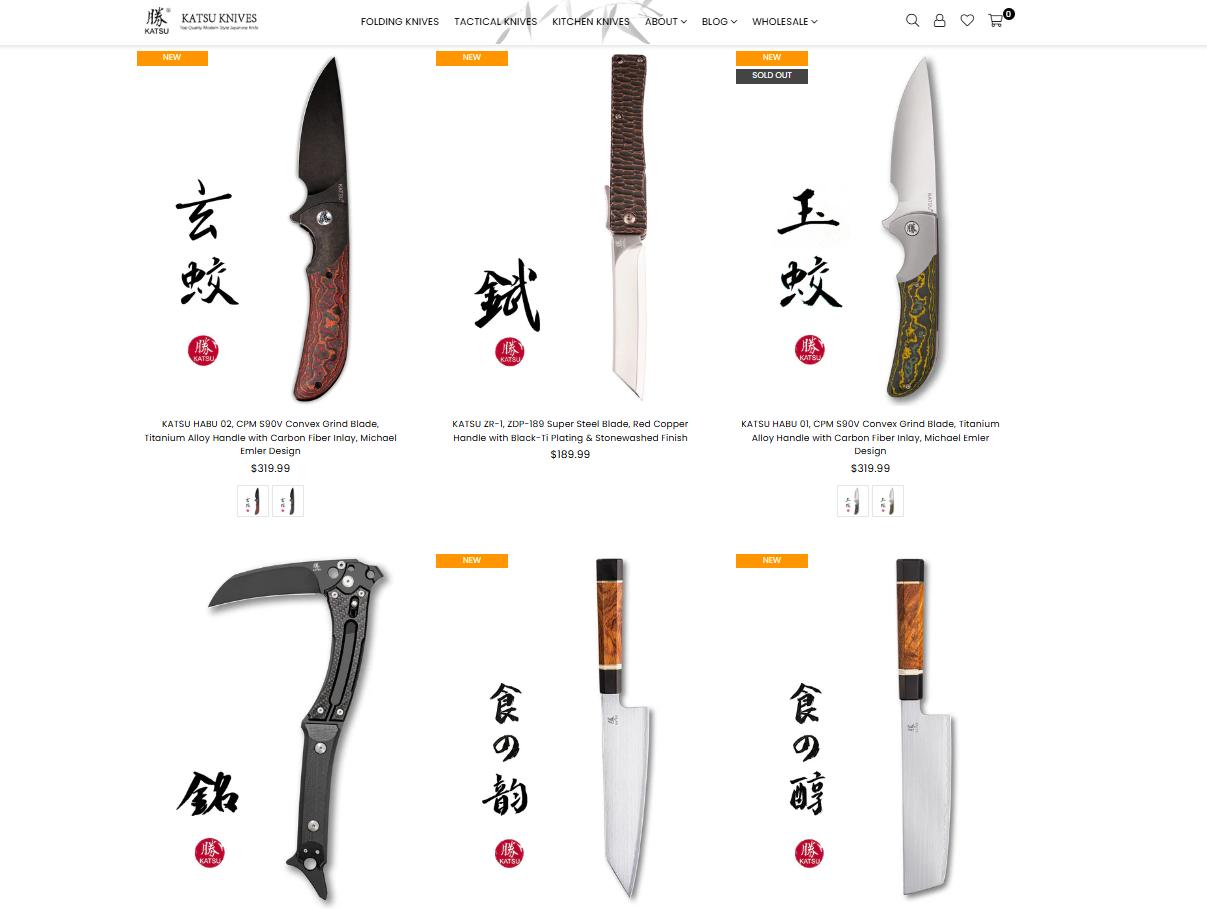
KATSU, by contrast, is a Hong Kong-based brand manufacturing in China. While its designs and steels (like AUS-10 or ZDP-189) are inspired by Japanese knives, they’re not made in Japan.
KATSU’s knives offer an affordable entry point for buyers seeking Japanese style, but not true Japanese craftsmanship.
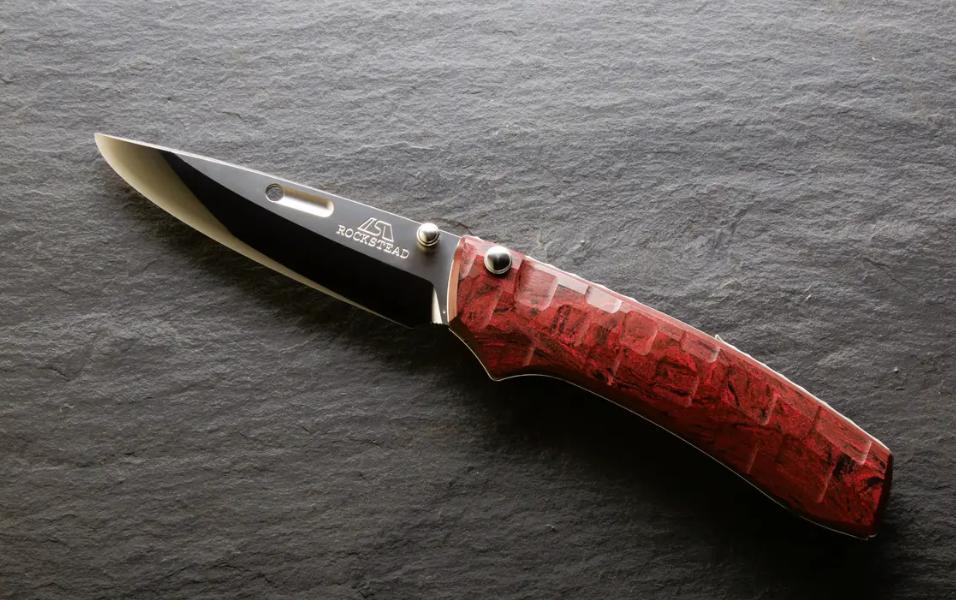
Rockstead, based in Osaka, sits at the top tier of Japanese knife-making.
Their blades, often ZDP-189 or YXR7, are hardened to extreme levels (65–67 HRC) and polished by hand to a flawless mirror edge. The result is unmatched sharpness and longevity.
Rockstead knives, such as the Higo and Shin, use precision-fitted aluminum or titanium handles and often feature DLC coatings for durability.
Prices start around $700, placing them firmly in the collector and luxury category, the pinnacle of Japanese cutting performance and refinement.
6. Dew Hara – Custom Japanese knife maker with artistic flair
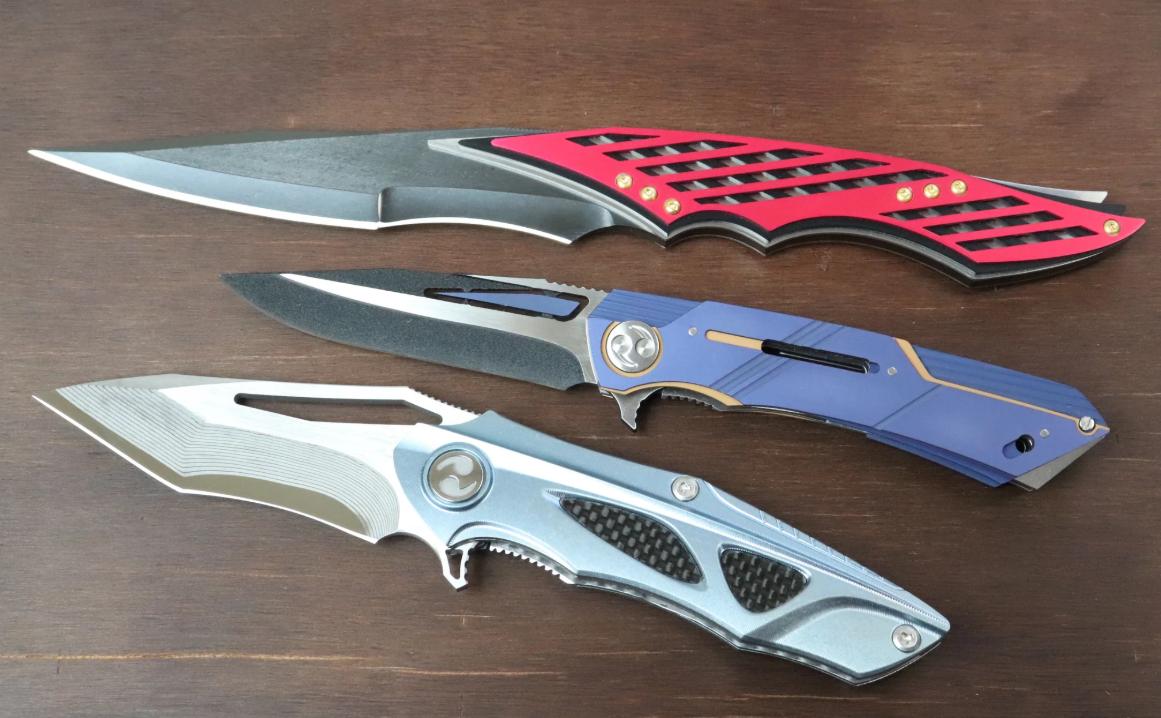
Dew Hara, son of master craftsman Koji Hara, blends traditional Japanese artistry with modern design.
His one-of-a-kind knives combine exotic materials like Cowry-X, VG-10 Damascus, and anodized titanium with bold color treatments and sculpted details.
Each piece is unique and often produced in extremely limited numbers. Dew Hara’s work exemplifies Japan’s new generation of knife artistry, functional, expressive, and highly collectible.
7. G. Sakai – Practical and reliable folding knives
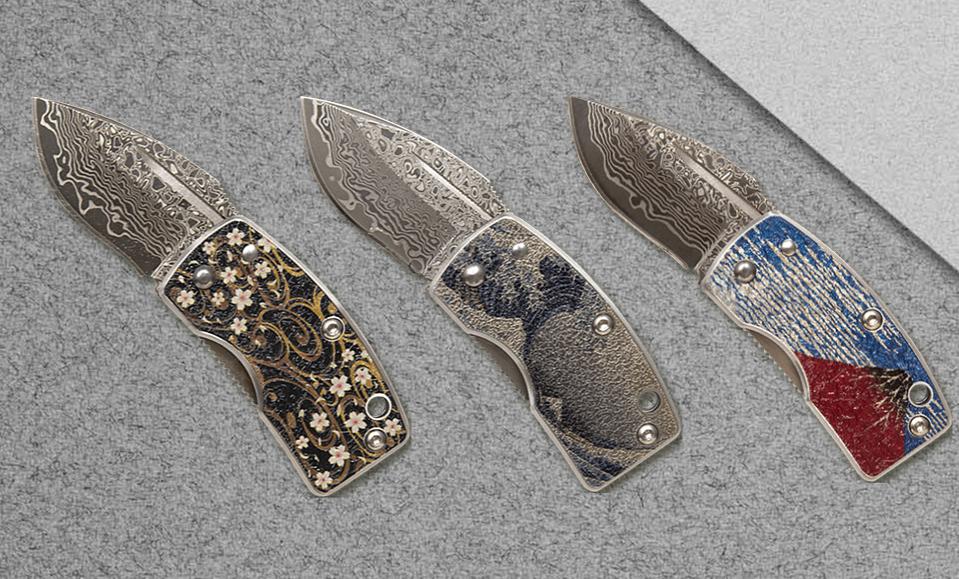
Founded in 1958 in Seki City, G. Sakai has deep roots in Japan’s modern knife industry.
After producing the Gerber Silver Knight series and OEM knives for Spyderco and SOG, G. Sakai established its own brand known for dependable, performance-driven designs.
Using steels like VG-10, AUS-8, and ATS-34, G. Sakai focuses on practical knives built for real use, from hunting and camping models to everyday folders.
They may lack the artistic flair of Moki or Mcusta, but their precision and cutting ability make them a trusted, work-ready option.
Launch Your Custom Knife Line Faster with LeeKnives
Complete OEM/ODM support—from design to final shipment—so you can focus on growth.
Backed by warehouses in the U.S. for fast, reliable delivery.
Buying guide: How to choose the right Japanese folding knife
With so many great Japanese brands and styles available, choosing the right knife comes down to three key factors, use, budget, and authenticity.
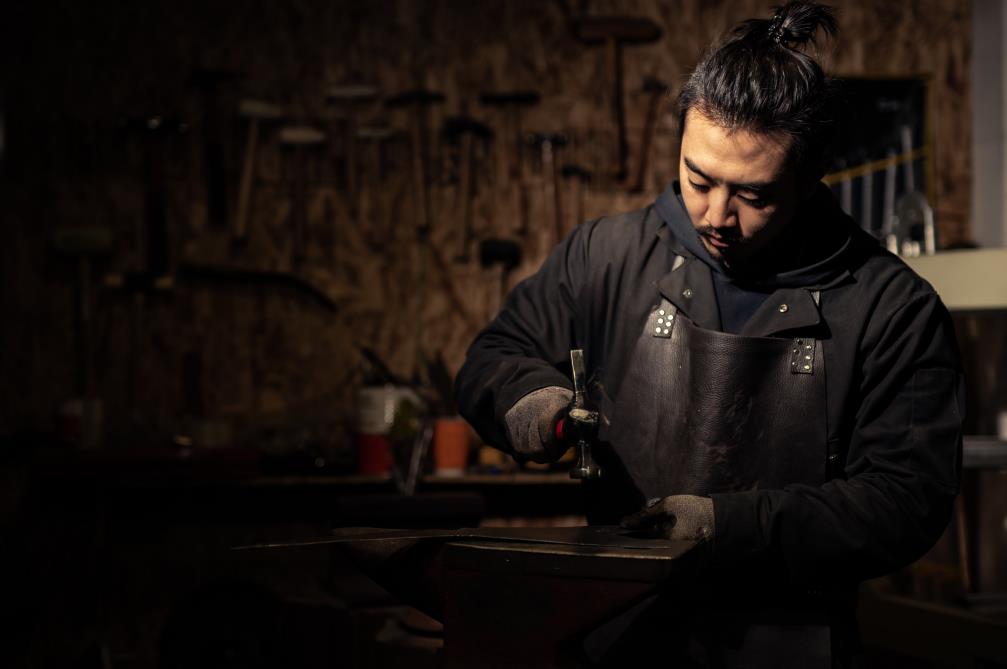
By use case
Everyday carry (EDC):
If you’re after a daily-use knife for opening packages or light cutting tasks, go for a modern folder. Mcusta and G. Sakai are excellent choices here.
Mcusta knives combine sleek design with precision fit and finish, while G. Sakai offers practical models like the Safari or Dozier collaborations known for ergonomics and easy maintenance.
Both brands use reliable stainless steels such as VG-10 and SPG2, ideal for frequent carry.
Outdoor or camping use:
For hiking or camping, durability and simplicity matter most. A Higonokami makes a great lightweight camp companion for small cutting or whittling tasks (though it lacks a lock, so handle with care).
G. Sakai also produces dedicated outdoor models built for function and visibility, often using corrosion-resistant steels and practical handle colors.
If you prefer modern ergonomics, look for Japan-made collaborations like Spyderco’s Delica or Endura series, which blend Japanese precision with outdoor-ready designs.
Collecting and display:
If your goal is craftsmanship and rarity, focus on high-end or custom makers.
Rockstead knives are investment-grade pieces admired for their mirror-polished perfection, while Dew Hara customs stand out for their bold artistry.
Vintage Japan-made knives from brands like Al Mar or early Spyderco collaborations are also collectible and hold historical appeal.
Launch Your Custom Knife Line Faster with LeeKnives
Complete OEM/ODM support—from design to final shipment—so you can focus on growth.
Backed by warehouses in the U.S. for fast, reliable delivery.
By budget
Under $50:
The most affordable authentic option is the Higonokami, usually priced between $20 and $40.
It’s a simple, reliable blade that embodies Japanese tradition.
You may also find KATSU knives in this range, they’re China-made but Japanese-inspired, offering a similar look for less.
$100–$200 (mid-range):
This is where Japan’s best value lies. Ohta’s handmade knives, Mcusta’s EDC folders, Moki’s lockbacks, and G. Sakai’s practical models all fall in this bracket.
Expect premium steels like VG-10 and top-tier fit and finish, ideal for enthusiasts who want both performance and craftsmanship.
$500 and up (premium):
At this level, you’re entering collector territory. Rockstead knives start around $700 and are known for their unmatched sharpness and finishing.
Dew Hara customs and other master artisans like Takeshi Saji also occupy this range, offering limited-production knives made with rare steels, titanium, and decorative inlays.
These are true heirloom pieces, often shipped with certificates or display boxes.
By authenticity and origin
Finally, consider how much “Made in Japan” matters to you. True Japanese-made knives carry an assurance of quality and often retain better long-term value.
Brands such as Nagao Kanekoma (Higonokami), Mcusta, Moki, and G. Sakai are fully Japan-based and proud of it.
Other brands use Japanese steels but manufacture abroad, KATSU, for example, makes knives in China while marketing them as “Japanese style.”
If authenticity is important, always check the maker’s factory location. Genuine Japanese producers are transparent about origin, while offshore brands often use vague phrases like “Japanese design” or “Japanese steel.”
There’s nothing wrong with choosing a Japan-inspired knife if it fits your budget and purpose, but knowing the provenance helps you buy wisely and avoid overpaying for something that only looks Japanese.
Why partner with LeeKnives?
After exploring Japan’s most respected folding knife brands, you might be wondering how to bring this craftsmanship to your own business. That’s where we come in.
At LeeKnives.com, we’ve spent over 15 years building partnerships with Japan’s top knife makers — from the precision of Seki City to the artistry of Miki. Our team helps international buyers, retailers, and OEM partners access authentic Japanese quality with practical, cost-efficient production.
B2B services we offer:
- OEM Manufacturing: Collaborate on Japanese-inspired designs with efficient, scalable production.
- Private Label: Build your own brand on proven Japanese knife craftsmanship.
- Wholesale: Combine styles and quantities starting from 100 pieces for flexible orders.
Why choose LeeKnives.com?
- 30-40% cost savings compared to direct Japan imports
- Faster lead times through established supply networks
- Technical support for steel selection and specifications
- Flexible MOQs for testing new markets or limited runs
Whether you need authentic Japanese folding knives or custom Japanese-style designs, we make sourcing simple. Contact us to discuss how our knife sourcing and manufacturing expertise can strengthen your product line and grow your business.
FAQs
Are Japanese switchblades legal?
No. In Japan, switchblades (automatic knives) are illegal to own or carry. The country’s knife laws are very strict, automatic knives, butterfly knives, and double-edged daggers are all banned. These laws tightened after the 2008 Akihabara incident.
As a result, Japanese manufacturers generally don’t produce civilian switchblades.
If you’re outside Japan, legality depends on local laws. In the U.S., federal law restricts interstate sales, and many states ban public carry.
Any “Japanese switchblade” you see online is either made for export or misusing the label. For legal alternatives, look for Japanese-style one-handed or assisted-opening knives made by international brands.
How do I maintain a Japanese folding knife, especially one with carbon steel?
Maintenance is simple but important:
- Prevent rust: Keep blades dry, especially carbon steel (like on Higonokami). Wipe after each use and apply a thin coat of oil such as camellia or mineral oil. Patina (darkening) is normal; orange rust is not.
- Sharpen correctly: Use whetstones or sharpening systems, keeping the original edge angle, around 15° per side for VG-10 or similar steels. Avoid cutting hard materials to prevent chipping.
- Lubricate pivots: Add a drop of oil if the opening action feels stiff. Keep the pivot clean and free of lint.
- Store properly: Keep knives in a dry area, ideally outside leather sheaths for long-term storage. Add silica gel if humidity is high. Following these steps keeps your knife sharp, rust-free, and smooth for years, a maintenance ritual many enthusiasts enjoy.
What’s the difference between Japanese and Western pocket knives?
- Steel & edge: Japanese knives often use harder steels (VG-10, Aogami, ZDP-189) for razor-sharp edges and long retention. Western knives use slightly softer steels (154CM, S30V) for easier sharpening and greater toughness.
- Mechanism: Traditional Japanese folders like the Higonokami are friction-based with no lock or spring, while Western knives often use slipjoints or locking mechanisms and may include multiple blades.
- Design: Japanese knives favor simplicity and refinement, often featuring Damascus patterns or natural materials. Western designs tend toward practicality and versatility.
- Culture: Everyday knife carry is more common in Western countries, while Japan’s strict laws limited folding knife culture, many modern Japanese folders evolved for export markets.
What do knife enthusiasts say about Moki and KATSU’s authenticity?
Knife forums overwhelmingly praise Moki as an authentic Japanese maker with custom-level quality and impeccable polish. Collectors note that Moki’s knives, and those they’ve made for brands like Al Mar and Spyderco, showcase true Seki craftsmanship.
KATSU, by contrast, is based in Hong Kong with manufacturing in China. Enthusiasts often caution that while KATSU offers decent value for the price, it shouldn’t be mistaken for a Japan-made knife. It’s considered Japan-inspired, not Japan-made.
The consensus: Moki earns respect from purists; KATSU offers affordable style but lacks true Japanese pedigree.
